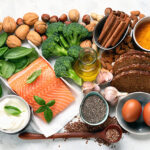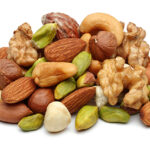Food for Thought
Beat your metabolic rate and burn your fat stores – Prof Jennie Brand-Miller explains how

Prof Jennie Brand-Miller
Our genetic make-up underlies our metabolic rate – how many kilojoules (calories) we burn per minute. Bodies, like cars, differ in this regard. A bigger body like a bigger car requires more fuel to run than a smaller one. When a car is stationary, the engine idles – using just enough fuel to keep the motor running. When we are asleep, the ‘revs’ are even lower and we use a minimum number of kilojoules. Our resting metabolic rate (RMR) – the kilojoules we burn by just lying completely at rest – is fuelling our large brain, heart and other important organs. Although the number of kilojoules (the amount of fuel we use) increases when we exercise or move around, the greatest proportion of the kilojoules we use in a 24-hour period are those we use to maintain our RMR.
Since your RMR is where most kilojoules are used, it is a significant determinant of body weight. The lower your RMR is, the greater your risk of gaining weight – and vice versa. And here’s where your genes come into the story as they determine whether you have a high or low RMR – it one of those things that does run in families. We all know someone who appears to eat like a horse but is positively thin. Almost in awe we comment on their fast metabolism, and we may not be far off the mark.
Men have a higher RMR than women because their bodies contain more muscle mass and are more expensive to run. Body fat, on the other hand, gets a free ride. These days, too many men and women have undersized muscles that hardly ever get a workout. Increasing muscle mass with weight-bearing (resistance) exercise will raise your RMR and is one of the secrets to lifelong weight control.
Interestingly, we know that our genes dictate the fuel mix we burn in the fasting state (overnight). Some of us burn more carbohydrate and less fat even though the total energy used is the same. Scientists believe that subtle deficiencies in the ability to burn fat (as opposed to carbs) lie behind most states of being overweight and obese.
Indeed, in their latest research, if you have one copy of a high risk gene called FTO, geneticists have found you are 30 per cent more likely to become overweight. If you have two copies, then you are 67 per cent more likely! That is the strongest association yet of a common gene with obesity. Unfortunately, one in six people of European descent carry two copies and are therefore more prone to gain weight in the current environment.
This doesn’t mean that if your genes are to blame you should resign yourself to being overweight too. But it may help you understand why you have to watch what you eat while other people don’t. Furthermore, the current epidemic of overweight can’t be blamed on our genes – our genes haven’t mutated in a space of 25 years, but our environment has. So while genetics writes the code, environment presses the buttons. Our current sedentary lifestyles and food choices press all the wrong buttons!
If you were born with a tendency to be overweight, what you eat matters more. Genes can be switched on or off. By being choosy about carbohydrates and fats you will maximise your insulin sensitivity, up-regulate the genes involved in burning fat and down-regulate those involved in burning carbs. By moving your fuel ‘currency exchange’ from a ‘carbohydrate economy’ to a ‘fat economy’, you increase the opportunity of depleting fat stores over carbohydrate stores. This is exactly what will happen when you begin to eat a nutritious, low GI diet.








